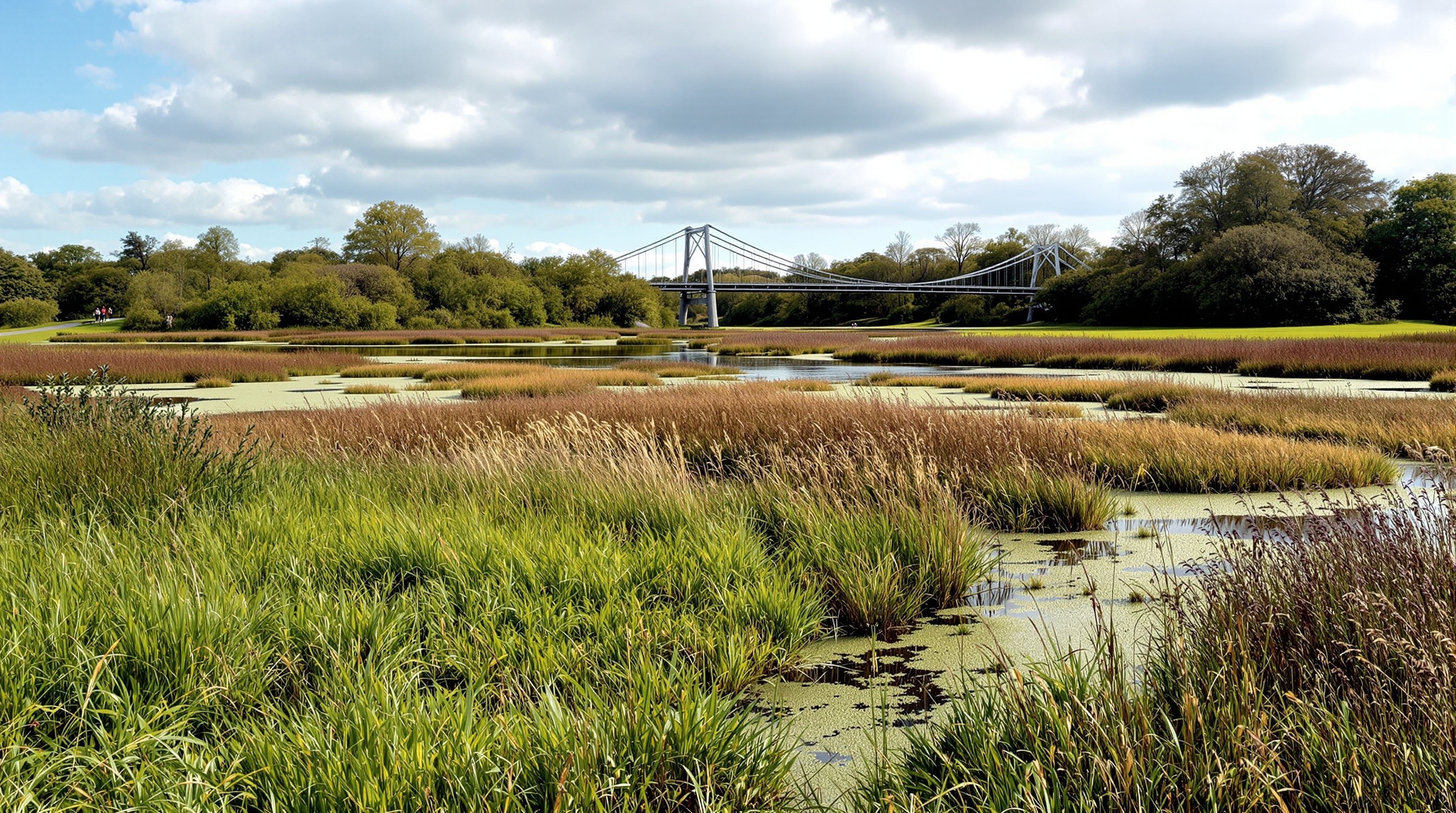
Chester Meadows
Riverside meadowland by the River Dee with over 1,000 years of history, accessible via suspension bridge and popular for wildlife watching.
Facilities
Chester Meadows stretches along the River Dee as protected riverside meadowland with over 1,000 years of documented ownership. Open 24 hours and accessible via the suspension bridge, these wetland habitats provide wildlife watching, river walks, and countryside atmosphere just minutes from Chester's city centre.
The meadows operate under ancient grazing rights and conservation protections that maintain the traditional landscape character. This legal framework preserves open grassland against development pressure, ensuring future generations inherit the same views that have existed for centuries.
Historical Significance
Documentary evidence traces Chester Meadows ownership and use back over a millennium, making this one of Britain's best-documented common lands. Medieval charters, court records, and maps reveal how communities managed and valued these riverside pastures.
Grazing rights allowed designated residents to pasture livestock on the meadows, providing essential resources for urban households maintaining animals. Whilst fewer people exercise these rights today, they remain legally valid and occasionally enforced.
The River Dee's course has shifted over centuries, with the meadows' extent changing as channels moved and islands formed. This dynamic relationship between water and land continues, with seasonal flooding redistributing sediments and affecting vegetation patterns.
Archaeological finds from the meadows include Roman, medieval, and later artefacts dropped or discarded along the riverbank. These objects connect the space to Chester's long occupation and the river's importance for transport, defence, and resources.
Wildlife and Nature
The wetland habitats support diverse birdlife including herons, kingfishers, swans, and numerous duck species. The combination of open water, reed beds, and grassland creates varied niches for different species throughout the year.
Seasonal flooding enriches the soil and creates temporary pools that attract wading birds and support amphibian breeding. This natural flood cycle, whilst occasionally inconveniencing walkers, maintains the ecological processes that built these habitats.
Wildflowers including meadowsweet, water mint, and marsh marigold thrive in the damp conditions. These native plants support insect populations including butterflies, dragonflies, and beetles characteristic of wetland environments.
The meadows function as ecological stepping stones, connecting the River Dee corridor to other green spaces in Chester's network. This connectivity allows wildlife movement between habitats despite urban development surrounding the area.
Recreation and Access
The suspension bridge provides the main pedestrian access, creating a memorable entry as the bridge sways slightly underfoot. This crossing point has connected the city to the meadows since Victorian times, replacing earlier ferries.
Paths follow the riverbank, with some sections surfaced whilst others remain grass tracks that become muddy during wet periods. This mix of path types suits different users from pushchairs needing firm surfaces to those preferring natural trails.
Dog walkers particularly value the meadows' open space and off-lead areas. The extensive grounds mean dogs can run whilst owners maintain sight lines, and the river provides natural entertainment for water-loving breeds.
The 24-hour access makes the meadows popular for dawn and dusk visits when wildlife activity peaks. Early morning walkers often spot herons fishing and experience the space in quiet solitude before daytime crowds.